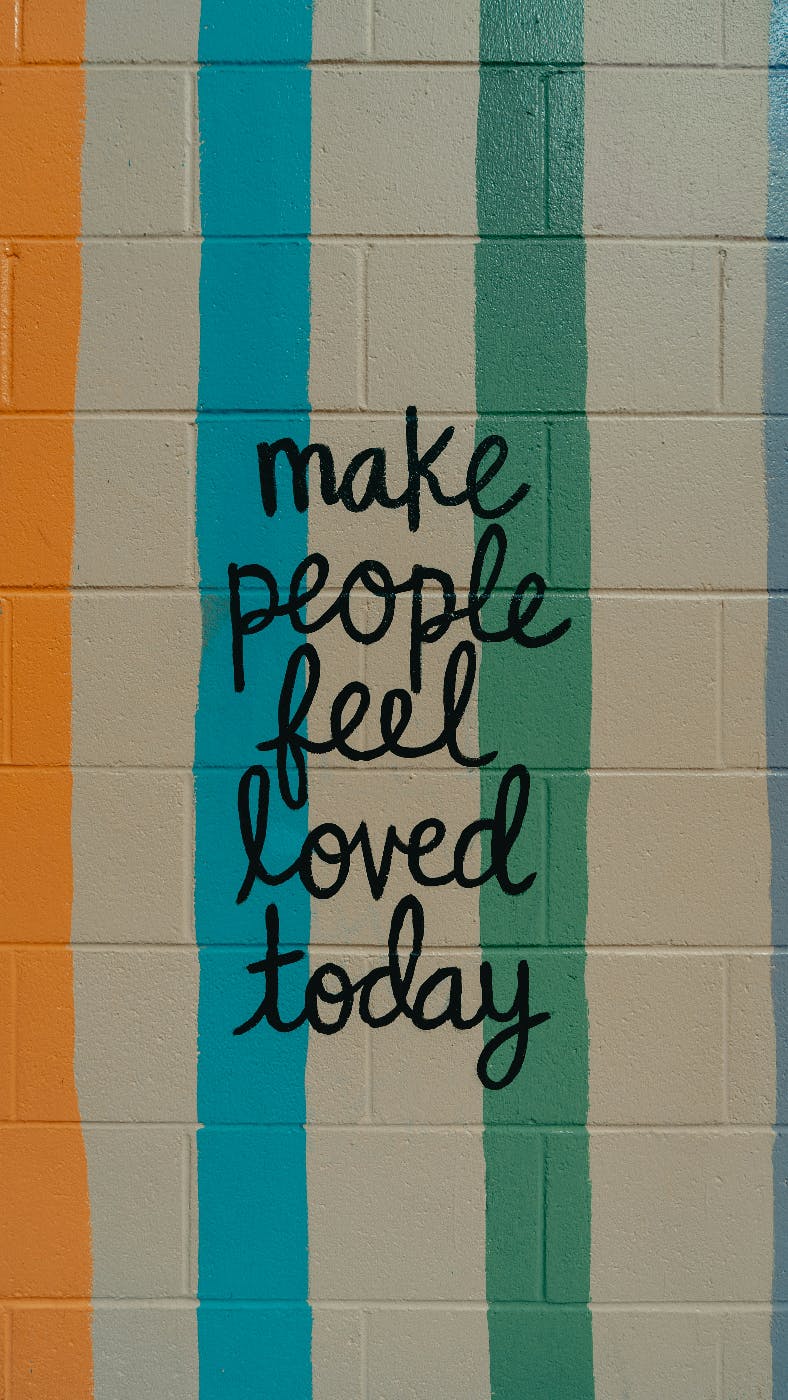
In the first part, we explored the balance between technological advancements and humanity. While AI and automation offer remarkable efficiencies, they cannot replace our innate human qualities—empathy, creativity, and meaningful connection.
Here’s a quick recap:
In the first part, we explored the balance between technological advancements and humanity. While AI and automation offer remarkable efficiencies, they cannot replace our innate human qualities—empathy, creativity, and meaningful connection. As we move forward, it’s crucial to recognize the promise and potential perils of overreliance on technology.
Now, let's dive into how we can harness AI and technology to enhance—not replace—humanity, ensuring ethical development and keeping people at the heart of innovation.
How AI and Technology Can Enhance, Not Replace, Humanity
As we navigate the world of advancing AI and technology, it’s essential to remember that their greatest power lies not in replacing us but working alongside us. When applied thoughtfully, technology can elevate the human experience, augmenting our natural abilities and helping us solve problems more efficiently. The key is striking a balance where machines handle repetitive or analytical tasks, freeing humans to focus on what we do best—care, create, and connect.
Enhancing Healthcare with AI
Nowhere is the synergy between technology and humanity more evident than in healthcare. AI-powered tools are revolutionizing the field by helping doctors diagnose diseases earlier and more accurately, analyzing medical images, and even predicting patient outcomes based on large datasets. These capabilities dramatically improve the efficiency and precision of medical care. For instance, AI algorithms are capable of detecting subtle patterns in radiological images that may escape even the most trained human eye, potentially saving lives through early diagnosis.
Yet, while AI can assist in making sense of data, it cannot replace the compassion and understanding that define the patient-caregiver relationship. Doctors and nurses provide more than just treatment—they offer emotional support, reassurance, and guidance during some of the most challenging moments of a person’s life. In healthcare, human empathy is irreplaceable, and no matter how advanced AI becomes, it cannot replicate the healing power of a kind word, a caring presence, or a reassuring touch. The future of healthcare will thrive when AI enhances the technical aspects of medicine, allowing human caregivers to devote more time to meaningful, compassionate patient interactions.

AI as a Creative Collaborator
Another area where AI can enhance, but not replace, humanity is in the creative industries. We’ve seen AI tools generate music, write scripts, and even design visual art. These tools are fascinating and valuable for speeding up creative processes or exploring new ideas. For instance, AI can quickly generate multiple drafts of a concept for a graphic designer, suggest plot twists for a writer, or compose background music for a video.
However, true creativity—especially in art, literature, and music—comes from human experiences, emotions, and perspectives. AI can only create based on patterns learned from existing works; it cannot originate something entirely new from lived experiences. Art is more than an arrangement of aesthetically pleasing elements—it expresses personal stories, struggles, joys, and emotions. A painting, novel, or song resonates with us not because it follows a perfect algorithm but because it reflects a shared human experience. AI can be a helpful tool in the creative process, but the emotional depth and imaginative spark that make art meaningful come from human minds and hearts.
Human-Centered Technology in Everyday Life
Technology can enhance human well-being in countless ways. Smart home devices, for example, can automate mundane tasks like adjusting thermostats, locking doors, or managing energy usage, giving us more time and mental space for things that truly matter—spending time with loved ones, pursuing hobbies, or simply resting. Similarly, AI-driven assistants help us manage our calendars, stay organized, and even provide reminders for important personal tasks, like calling family members or taking breaks during busy workdays.
When designed thoughtfully, technology can alleviate everyday stress and improve quality of life without overshadowing our human needs. Consider AI in education, where personalized learning platforms can adapt lessons to individual students' strengths and weaknesses, providing tailored support that helps them succeed. Yet, even in these cases, human teachers remain indispensable, offering encouragement, inspiration, and real-world guidance that no algorithm can replicate.
The Human Element is Always Central
In all these examples, one thing remains constant: technology can only enhance our lives when it’s used as a tool that complements our human qualities. We must remain the authors of our own stories, using AI to handle the details while focusing on creativity, connection, and compassion. The goal is not to create a future where machines replace us but one where they empower us to do more of what makes us uniquely human.
AI can perform calculations and process data with incredible speed, but it cannot replace the intuition, empathy, or moral reasoning that guides our decisions and interactions. It’s up to us to design, implement, and use technology in ways that enrich rather than erode the human experience. By positioning technology as a collaborator rather than a replacement, we can harness its potential to build a future where both humans and machines thrive together.

The Importance of Ethical AI Development
As AI and technology continue to reshape our world, the ethical considerations surrounding these advancements have moved to the forefront of discussions. It’s not enough for technology to be powerful or efficient—it must also be responsible, human-centered, and aligned with the values that define our societies. The conversation around ethical AI is growing, and it’s becoming increasingly clear that the choices we make now in developing and deploying AI systems will have lasting impacts on our future.
Building Human Values into Technology
One of the most significant challenges we face in this technological age is ensuring that AI systems are built with human values at their core. AI is a reflection of the data and algorithms it’s trained on, and if those inputs are flawed—whether through bias, exclusion, or narrow perspectives—the outputs will be equally problematic. This is where ethical AI development becomes crucial. Developers, tech leaders, and policymakers must prioritize inclusivity, fairness, and empathy when designing AI systems.
Ethical AI isn’t just about avoiding harm but actively embedding human values into technology. Inclusivity, for example, means ensuring that AI serves all groups equitably, not just those who have historically had more access to technology. Empathy means developing AI that can better understand and respond to human needs and experiences, especially in sensitive areas like healthcare or education. Moral accountability ensures that when AI makes decisions—whether it's approving a loan, recommending a medical treatment, or hiring an employee—those decisions are fair, transparent, and justifiable.
The Role of Developers and Leaders in Ethical AI
The responsibility for building ethical AI does not fall solely on engineers and data scientists. It requires leadership from every corner of society—governments, corporations, educational institutions, and civil society must all play a role. Developers must be trained in the technical aspects of AI and the ethical implications of their work. Leaders in technology companies must take a stand on issues like data privacy, fairness, and transparency, ensuring that the systems they create do not perpetuate inequality or harm vulnerable communities.
In practice, this could mean creating more diverse teams of developers who can bring different perspectives to the table and involving ethicists, sociologists, and human rights experts in the design process. It also requires ongoing oversight—continually assessing how AI systems are performing and making adjustments when biases or errors are detected.
For example, we’ve already seen cases where AI systems have made biased decisions due to the data they were trained on. Hiring algorithms that discriminate against women, facial recognition systems that are less accurate for people of color, and predictive policing systems that reinforce existing racial biases are all stark reminders that without ethical oversight, AI can perpetuate or even worsen societal inequalities.

Voices in the Ethical AI Space
Many thought leaders and organizations are already pushing for ethical AI development. Timnit Gebru, a prominent AI researcher, has highlighted the dangers of biased algorithms and the importance of addressing systemic inequalities within AI systems. Gebru’s work at Google and later in founding the Distributed Artificial Intelligence Research Institute (DAIR) has drawn attention to how large corporations need to take responsibility for the ethical implications of their technologies.
Similarly, ethicist and researcher Kate Crawford has argued that AI is not neutral and that the systems we build reflect the biases and values of those who create them. In her book, Atlas of AI, Crawford explores how AI is embedded in larger power structures—economic, social, and environmental—and urges us to think critically about who benefits from AI advancements and who might be harmed.
Organizations like OpenAI and the Partnership on AI have also committed to advancing ethical AI, advocating for responsible research and development. They’ve called for greater transparency in how AI models are trained and deployed and for the establishment of regulations that ensure AI is used ethically.
The growing field of "AI ethics" is evidence of how important it is to humanize technology. It’s not just about making sure AI works—it’s about ensuring that AI works for everyone and upholds all people's dignity, rights, and well-being.
Why Humanizing Technology Matters
The push for ethical AI development is fundamentally about preserving our humanity in a world where machines are becoming more intelligent and pervasive. AI can influence almost every aspect of our lives, from how we interact with services to how we understand our place in society. As we integrate these systems more deeply into the fabric of our lives, we must maintain control over the values and principles they embody.
When we humanize technology, we ensure that AI serves as a tool for good, enhancing the quality of life for everyone, not just a select few. We also create a future where technology amplifies our best human qualities—compassion, fairness, and creativity—rather than diminishing them.
Ultimately, ethical AI development is not just a technical issue; it’s a social, moral, and human one. By building AI systems that are inclusive, empathetic, and accountable, we can ensure that technology doesn’t dehumanize us but instead helps us become more humane.

How to Keep Humanity at the Forefront in a Tech-Driven World
As we continue integrating technology and AI into every facet of life, it becomes increasingly important to maintain a human-centered approach. Technology, for all its benefits, should enhance our humanity, not diminish it. This means we must be intentional about how we use it, ensuring that it aligns with our values, promotes well-being, and fosters meaningful connections. Below are several actionable strategies for individuals, businesses, and society to keep humanity at the forefront in a tech-driven world.
1. Encourage Lifelong Learning in Emotional Intelligence and Ethics
While technological literacy is essential today, emotional intelligence (EQ) and ethical awareness are equally important. As technology evolves, individuals need to continue developing their soft skills—empathy, communication, collaboration, and ethical decision-making—that machines cannot replicate.
Organizations can foster this by offering training programs focusing on emotional intelligence, ethics, and technical skills. Courses on leadership, empathy, conflict resolution, and ethical AI should be a standard part of professional development. For individuals, this means committing to lifelong learning in these areas, ensuring that they remain adaptable and grounded in their human qualities, even as they work with cutting-edge technologies.
Moreover, schools and universities should integrate ethics and emotional intelligence into their curriculums. Teaching young people to understand how technology works and how it impacts society on a moral level will prepare the next generation to be responsible innovators and leaders in a tech-driven world.
2. Focus on Building Technologies that Augment Human Strengths
One of the most important ways to keep humanity at the center of technological development is by designing technologies that enhance, rather than replace, human strengths. AI and automation can handle repetitive or data-heavy tasks, allowing humans to focus on creativity, problem-solving, and relationship-building—areas where we excel.
For example, in industries like healthcare, AI can assist with diagnostics, but the human elements of care—listening, empathizing, and providing emotional support—should remain central. The same applies in education, where AI can personalize learning plans, but teachers must continue to play a crucial role in inspiring students and guiding them through challenges.
Organizations should prioritize technologies amplifying human potential rather than viewing AI as replacing human jobs. This means investing in tools that help workers improve their performance, enhance collaboration, and tap into their creative abilities. By doing so, businesses can increase productivity while keeping their workforce engaged and empowered.
3. Promote Human-to-Human Interactions in Digital Spaces Through Empathy-Driven Designs
As our lives become more digitized, human-to-human interactions can easily get lost in the shuffle. To counter this, digital spaces should be designed with empathy at their core. Whether through social media platforms, customer service channels, or remote work tools, we must prioritize meaningful, human-centered interactions that foster connection and understanding.
Empathy-driven design is vital to this. It’s about creating intuitive, respectful, and inclusive interfaces that ensure users feel seen, heard, and valued. For example, chatbots may handle initial inquiries in customer service, but customers should always have the option to speak with a human representative for more complex or sensitive issues. Similarly, in digital workplaces, tools that facilitate communication and collaboration should emphasize transparency, inclusivity, and real-time feedback to keep teams feeling connected and aligned, even when physically apart.
Designers and developers need to prioritize the user experience, focusing on accessibility, cultural sensitivity, and emotional well-being. The goal should be to create digital environments that function well and make people feel supported and understood.

4. Advocate for Policies that Prioritize Mental Health and Well-Being
As we adopt more technology in our daily lives, we must address the mental and emotional toll that a constantly connected, high-tech world can have on individuals. Burnout, stress, and feelings of isolation are all byproducts of a culture emphasizing productivity and connectivity over well-being.
Both individuals and organizations have a role to play in advocating for policies prioritizing mental health alongside technological growth. Companies can implement policies encouraging work-life balance, such as limiting after-hours emails, providing mental health resources, and promoting time for rest and recovery. Leaders should also embrace flexibility in how people work, offering hybrid or remote options that allow for a healthier integration of work and life.
Governments and institutions should enact regulations that protect people’s mental well-being in the face of increasing digital demands. This could include mandating time-off policies, ensuring access to mental health care, and addressing the negative effects of social media on mental health, particularly for younger generations.
Additionally, tech developers can build features into products that encourage mindful usage. For instance, social media platforms can introduce time management tools that allow users to set boundaries or create content that promotes positivity and mental well-being instead of fostering comparison and division.
5. Lead with Purpose and Compassion
Perhaps most importantly, organizations and individuals should lead with purpose and compassion as they adopt and develop new technologies. Leaders in the tech space have a responsibility to ask not just “What can we build?” but “Why are we building this?” and “How will this benefit humanity?”
This mindset shift from profit-driven innovation to purpose-driven creation is key to ensuring that technological advances serve the greater good. Businesses and developers should consider the broader societal impacts of their innovations—ensuring that they are inclusive, accessible, and beneficial for all, not just a select few. Compassionate leadership also means being willing to slow down, reflect on unintended consequences, and adjust course if necessary.
By focusing on human well-being at the heart of technological advancement, we can create a future in which technology serves as a tool for positive change rather than a force that alienates us from our humanity.
Summing Up
As we move into an increasingly tech-driven world, one thing remains clear: technological advancements are inevitable and valuable. They open new doors, solve complex problems, and enhance our ability to navigate and improve the world around us. But as we innovate, we must be vigilant in ensuring that progress does not come at the expense of our humanity.
Empathy, creativity, and meaningful connections are qualities that make us human, and no machine can replicate these fully. While AI and automation can handle tasks and provide insights, our emotional intelligence, imagination, and ability to connect will continue to shape the future in ways that truly matter.
At ThoughtLab, we understand this balance. In our marketing and branding work, we embrace new technologies and leverage them to improve strategies, insights, and efficiencies. Yet, at the core of everything we do is the belief that human connection remains the foundation of impactful marketing. We combine cutting-edge tools with a deep understanding of the human experience, ensuring our approach stays authentic, relatable, and meaningful.
The call to action for all of us is to safeguard these values as we integrate technology into more aspects of life and work. Whether developing AI, using automation in your business, or simply navigating the digital world, always remember to center humanity in your approach. By doing so, we can ensure that technology is a tool for enhancing our human experience, not replacing it.
Let’s continue to innovate while staying grounded in the qualities that define us—our empathy, creativity, and ability to connect. In the end, it’s this balance between technology and humanity that will truly drive us forward.

